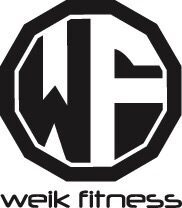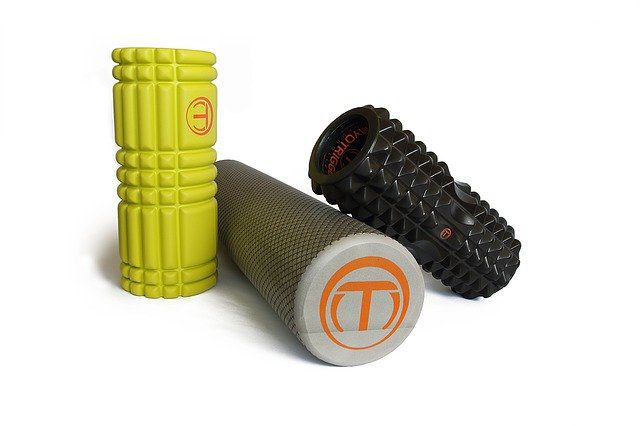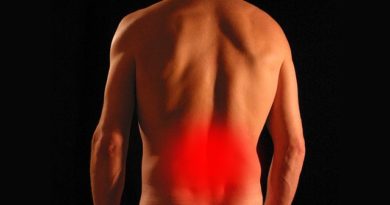Try These 9 Strategies to Improve Recovery Following Workouts
If you train with any kind of intensity, you know the feeling that follows, a deep soreness that settles into your muscles. That sensation is called delayed-onset muscle soreness, or DOMS, and it’s a clear sign your body needs to repair and rebuild. What you need to do is improve recovery following your workouts.
How well you recover from those intense workouts directly impacts how quickly that soreness fades.
In my experience as a certified strength and conditioning coach, focusing on recovery is the secret to getting back into the gym faster and stronger. This guide breaks down nine powerful and science-backed strategies you can use to improve recovery, reduce muscle soreness, and keep your training on track.
Disclaimer: This article is for informational purposes only and is not meant to treat or diagnose any condition. It is recommended that you speak with your doctor before starting any exercise program, changing your daily nutrition, or adding any supplements to your regimen.
Table of contents
Key Takeaways
- Prioritize Sleep: Aim for 7-9 hours of quality sleep per night, as this is when your body releases growth hormone to repair muscle tissue.
- Fuel Your Recovery: Consume adequate protein (1.4-2.0 g per kg of body weight) and Essential Amino Acids (EAAs) to provide the building blocks for muscle repair.
- Stay Hydrated: Drink plenty of water throughout the day, not just during workouts, to transport nutrients and flush out toxins.
- Use Recovery Tools: Incorporate massage guns, foam rollers, cold therapy, and saunas to increase blood flow, reduce inflammation, and relieve muscle tension.
- Embrace Rest: Schedule dedicated rest days and consider active recovery (like light walking or yoga) to allow your muscles 24-72 hours to rebuild before training them again.
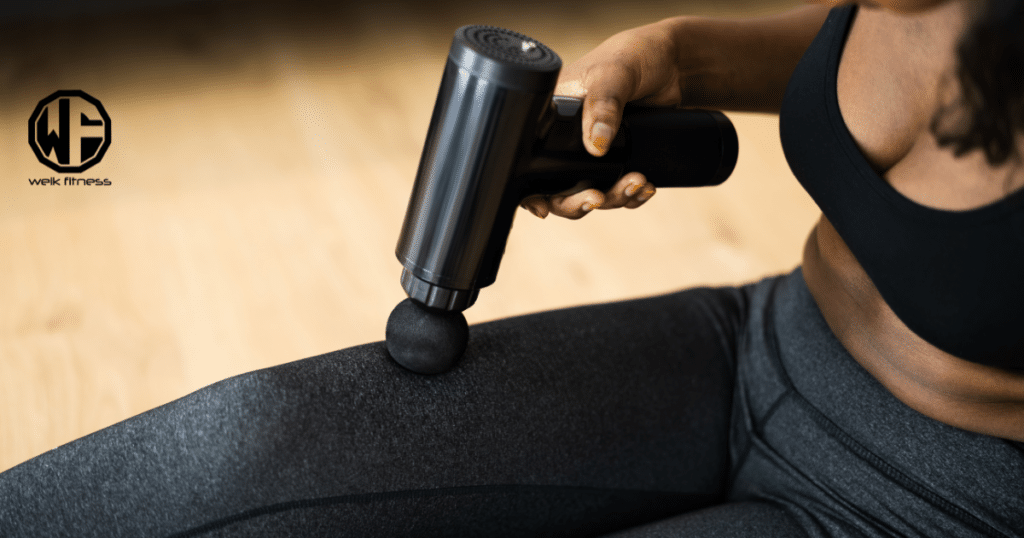
9 Helpful Ways You Can Improve Recovery
Give the strategies below a try to improve recovery following intense workouts and get back to your training sooner.
1. Use a Massage Gun or Foam Roller
Percussive therapy and self-myofascial release are fantastic ways to kickstart your recovery. A massage gun, like a Theragun or Hyperice, and a simple foam roller are two of the best self-massage tools you can use after a tough session.
Research confirms that massage guns can effectively reduce DOMS by increasing blood flow and breaking up muscle knots. A 2023 review even found they can increase flexibility in key areas like the hamstrings. The goal is to decrease muscle tension and reduce inflammation while flooding the muscle with oxygenated blood and nutrients. While a massage gun can be an investment, a quality foam roller is highly effective and budget-friendly.
Many users make the mistake of rolling too fast. For the best results, slow down and apply steady pressure to a sore area for 30-60 seconds before moving on. This gives the muscle tissue time to relax and release.
2. Get a Professional Massage
While self-massage tools are great, nothing quite replaces the hands of a skilled professional. A good massage helps flush toxins from the muscle, improves circulation, and breaks up deep-seated tightness you might not be able to reach on your own.
Related Article: What is Lactic Acid Training and Can It Help Improve Results?
Athletes can benefit from several types of massage, each with a specific purpose:
- Deep Tissue Massage: Uses slow, firm pressure to target the deepest layers of muscle and connective tissue, which is ideal for chronic soreness.
- Swedish Massage: A more relaxing style that uses long, flowing strokes to improve circulation and soothe muscle tension, making it great for general recovery.
- Sports Massage: A vigorous massage that often includes stretching and joint mobilization to prepare muscles for peak performance or aid recovery.
While getting a professional massage after every workout isn’t feasible for most, scheduling one periodically, especially after a particularly demanding training block, can significantly improve recovery.
3. Get More Sleep
Sleep is arguably the most critical component of recovery, yet it’s often the most neglected. The National Sleep Foundation recommends that adults get between seven and nine hours of sleep per night, and for athletes, this is non-negotiable. Some experts even encourage elite athletes to aim for at least nine hours to fully recover.

During deep sleep, your body produces growth hormone (GH), which is directly responsible for repairing and building lean muscle tissue. A Stanford University study on basketball players who extended their sleep to 10 hours a night found they ran faster and improved their shooting accuracy by at least 9%. Remember, muscles don’t grow in the gym; they grow when you rest and recover.
4. Utilize Amino Acids
Amino acids are the building blocks of protein and are essential for repairing muscle fibers after intense workouts. While whole protein sources are vital, supplementing with amino acids can provide a faster, more direct route to help improve recovery.
It’s important to choose a supplement with all nine Essential Amino Acids (EAAs), not just the three Branched-Chain Amino Acids (BCAAs). While BCAAs can help reduce muscle soreness, studies show that EAAs are far more effective at stimulating muscle protein synthesis, the process of rebuilding muscle. Think of it this way: BCAAs can start the engine for muscle repair, but you need all nine EAAs to actually drive the car.
The MPA PharmGrade EAA is a great option, providing over 13g of high-quality essential amino acids per serving. It also includes coconut juice powder and Himalayan Pink Sea Salt to help with hydration, which is another key component of recovery.
5. Consume More Protein
Following on from amino acids, getting enough total protein is fundamental to improve recovery. The International Society of Sports Nutrition (ISSN) recommends that physically active individuals consume between 1.4 to 2.0 grams of protein per kilogram of body weight each day (about 0.64 to 0.91 grams per pound). This intake helps prime your body to rebuild and repair sore, broken-down muscle fibers.

Focus on high-quality, whole-food sources like lean meats, fish, eggs, and dairy. A fast-digesting protein powder, like a whey isolate, is an excellent tool for post-workout recovery when your body is ready to absorb nutrients. For a top-tier option, MPA IsoSolve provides 25g of cold-filtered whey isolate that is lactose-free and sugar-free, making it an efficient way to kickstart the muscle-building process.
6. Drink More Water
Proper hydration is essential for every bodily function, especially when it comes to helping improve recovery. Water transports vital nutrients to your muscles and helps flush out metabolic waste that can slow down the repair process. Even mild dehydration, as little as a 2% loss in body weight, can significantly impair performance.
A common guideline is to drink 0.5 to 1 ounce of water per pound of body weight daily. However, your needs will increase based on your activity level and the climate. To ensure you’re getting enough, try weighing yourself before and after your workout. For every pound you lose, you should aim to drink 16-24 ounces of fluid to fully rehydrate.
7. Try a Cold Bath or Shower
Cold water immersion (CWI) might not sound pleasant, but it’s a proven technique to reduce muscle soreness and inflammation. The cold temperature constricts blood vessels, which helps flush waste products out of the muscles. When you warm up again, fresh, nutrient-rich blood flows back in.
While the science is still evolving, many athletes and experts find significant benefits. An ice bath is the most effective method, as it ensures your entire lower body is immersed. If that’s too intense, even a cold shower focused on the muscles you trained can help. Try to endure the cold for at least a few minutes to get the full effect.
8. Jump in the Sauna
On the opposite end of the temperature spectrum, heat therapy in a sauna can also work wonders to help improve recovery. The heat increases blood flow, which helps shuttle more oxygen and nutrients to your taxed muscles. This process can help relieve muscle tension and allow your body to relax after a grueling session.
Research suggests that spending 15-30 minutes in a sauna after a workout can provide substantial benefits. For beginners, it’s best to start with shorter sessions of around 10-15 minutes and see how your body responds. For optimal recovery, some studies recommend using an infrared sauna for 30 minutes post-workout.
9. Implement Rest Days
The “no days off” mindset can be detrimental to your progress. Your body needs time to recover fully, and that means scheduling dedicated rest days. It’s recommended to allow a muscle group 24-72 hours of rest before training it again. This is the window where torn-down muscle fibers rebuild and come back stronger.
However, rest doesn’t have to mean sitting on the couch all day. Many athletes benefit from “active recovery,” which involves light, low-intensity exercise like walking, swimming, or yoga. This gentle movement keeps blood flowing, which can help reduce stiffness and speed up the removal of metabolic byproducts without adding more stress to your muscles.
Improve Recovery FAQs
What is the fastest way to improve recover from a workout?
There is no single “fastest” way, but a combination of strategies works best. Prioritize high-quality sleep (7-9 hours), consume a post-workout meal with adequate protein and carbohydrates, stay hydrated, and use techniques like foam rolling or a cold shower to manage inflammation.
How many rest days should I take a week?
This depends on your training intensity and experience. A good starting point for most people is 1-2 dedicated rest days per week. On these days, you can either completely rest or engage in light active recovery like walking or stretching.
Is it OK to work out with sore muscles?
It depends on the severity. If you have mild soreness, light exercise or active recovery can actually help by increasing blood flow. However, if the soreness is severe and restricts your range of motion, it’s best to rest that muscle group to avoid injury.
Should I use heat or ice for muscle recovery?
Both can be effective. Ice (cold therapy) is generally best immediately after a workout to reduce inflammation and numb soreness. Heat (like a sauna or warm bath) is great for increasing blood flow and relaxing tight muscles, and it can be used later in the day or on rest days.
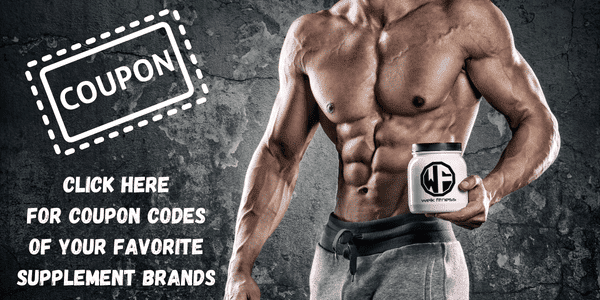

*Disclosure: This article may contain affiliate links or ads, which means we earn a small commission at no extra cost to you if you make a purchase through these links. These commissions help support the operation and maintenance of our website, allowing us to continue producing free valuable content. Your support is genuinely appreciated, whether you choose to use our links or not. Thank you for being a part of our community and enjoying our content.
PLEASE CONSIDER SHARING THIS ON YOUR SOCIAL MEDIA TO HELP OTHERS LEARN MORE ABOUT THIS TOPIC.


*Disclosure: This article may contain affiliate links or ads, which means we earn a small commission at no extra cost to you if you make a purchase through these links. These commissions help support the operation and maintenance of our website, allowing us to continue producing free valuable content. Your support is genuinely appreciated, whether you choose to use our links or not. Thank you for being a part of our community and enjoying our content.
PLEASE CONSIDER SHARING THIS ON YOUR SOCIAL MEDIA TO HELP OTHERS LEARN MORE ABOUT THIS TOPIC.
